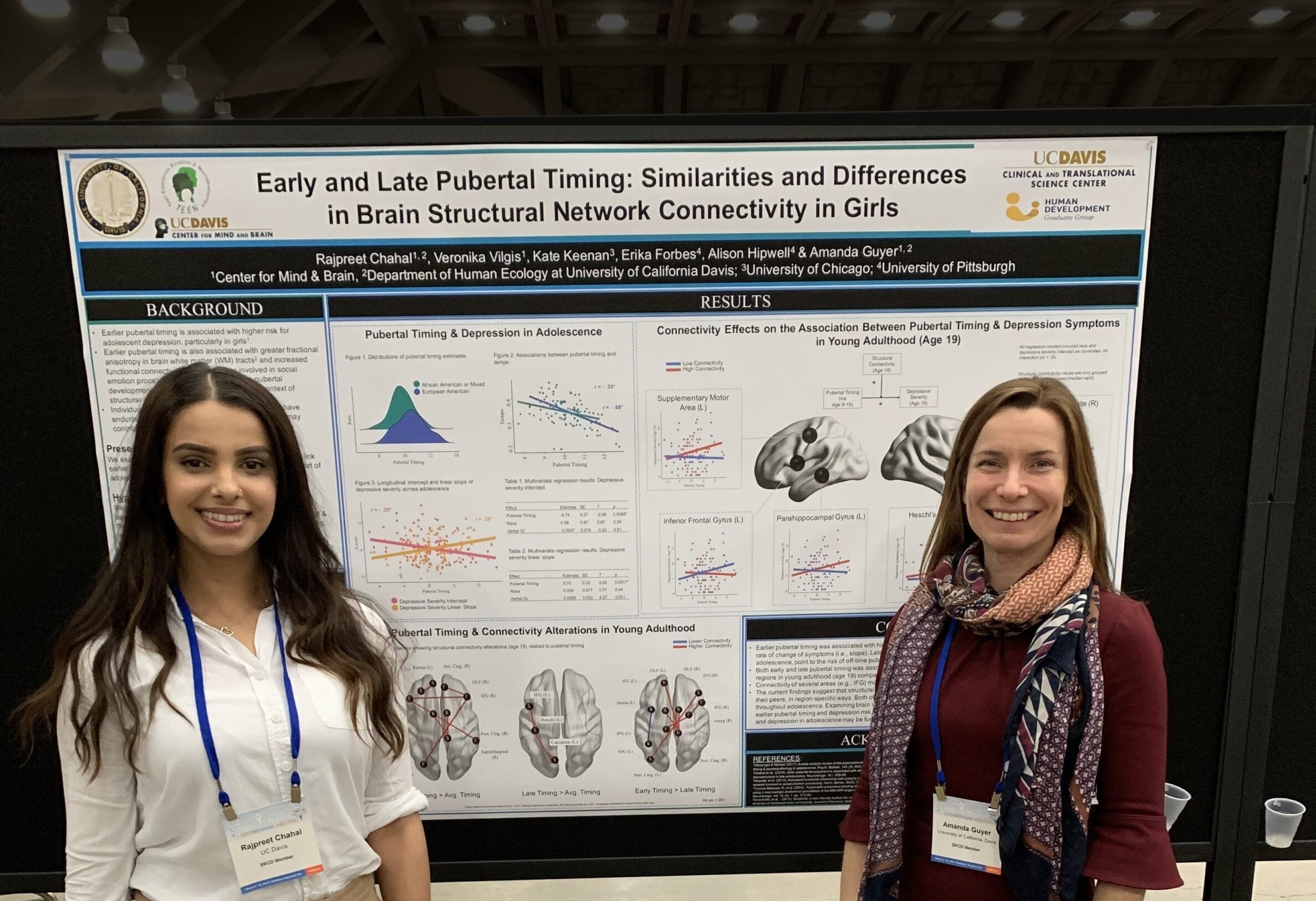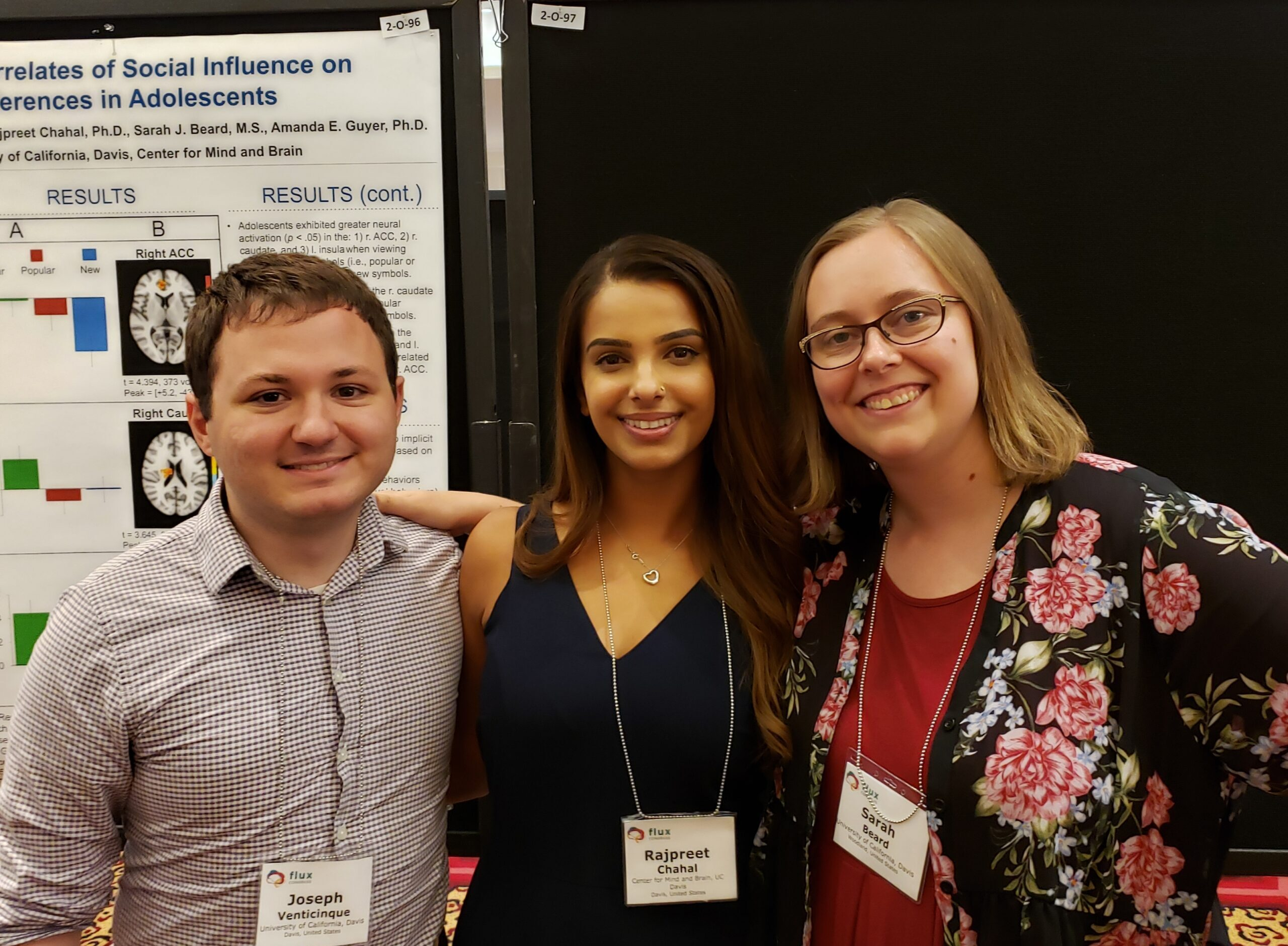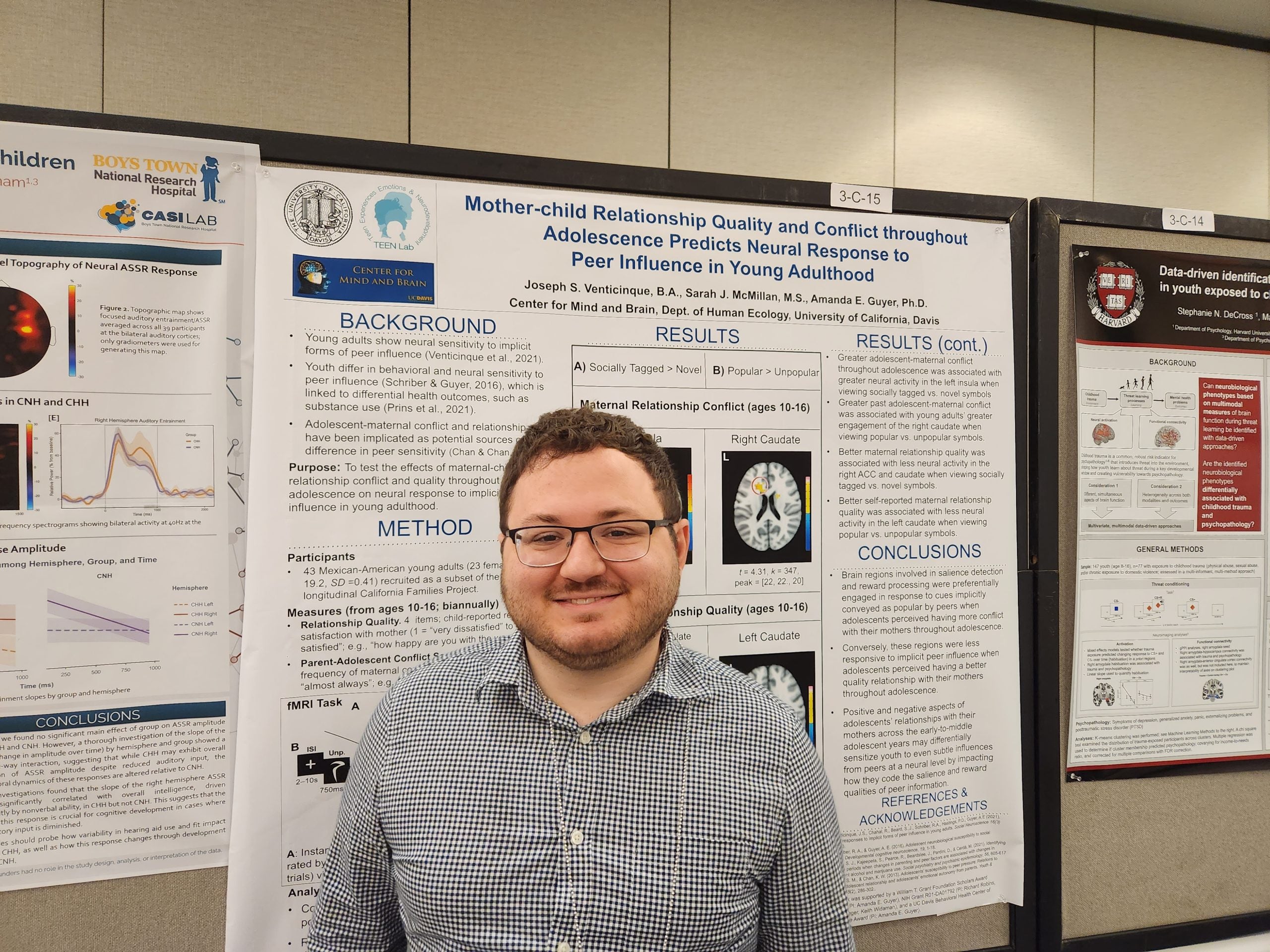Amanda E Guyer, Eric E Nelson, Koraly Perez-Edgar, Michael G Hardin, Roxann Roberson-Nay, Christopher S Monk, James M Bjork, Heather A Henderson, Daniel S Pine, Nathan A Fox, and Monique Ernst (2006). J Neurosci, 26(24):6399-405.
The temperamental style of behavioral inhibition has been characterized by exaggerated behavioral and neural responses to cues signaling threat. Virtually no work, however, has addressed whether behavioral inhibition may also confer heightened brain activation in response to positively valenced incentives. We used event-related functional MRI (fMRI) and a monetary incentive delay task to examine whether the neural response to incentives is also greater in adolescentscharacterized as behaviorally inhibited early in life compared with those characterized as non-inhibited. Whereas task performance did not differ between groups, fMRI revealed greater striatal activation to incentives in behaviorally inhibited adolescents than in non-inhibited adolescents. This was regardless of whether the incentive was an anticipated gain or loss. Alteration in neural systems underlying behavior modulated by both negative and positive contingencies may represent a correlate of behavioral inhibition that also underlies vulnerability to various forms of developmental psychopathology.




